The northwest edge of Allschwil, Switzerland, directly adjacent to the border with France, is a global hub for innovative companies in the fields of pharmaceuticals, medicine, and research. The SIP Main Campus project is being developed in this area within the BaseLink site, joining the existing Tech and Life Science Cluster; it is adjacent to sports facilities, a recreational area, and a residential neighborhood. The structural concept reduces interior divisions and vertical supports as much as possible, allowing for a large variety of uses; this flexibility, combined with the durability of building materials, extends the potential life span of the building. Start-ups, scale-ups, and established companies from the biotech and healthcare sectors are addressed as potential users, as are programs that contribute to a better work-life balance and the overall revitalization of the area – for example, the Swiss International School will open a primary school, which will help minimize the need for additional commuting for families.
Herzog & de Meuron SIP Basel Area
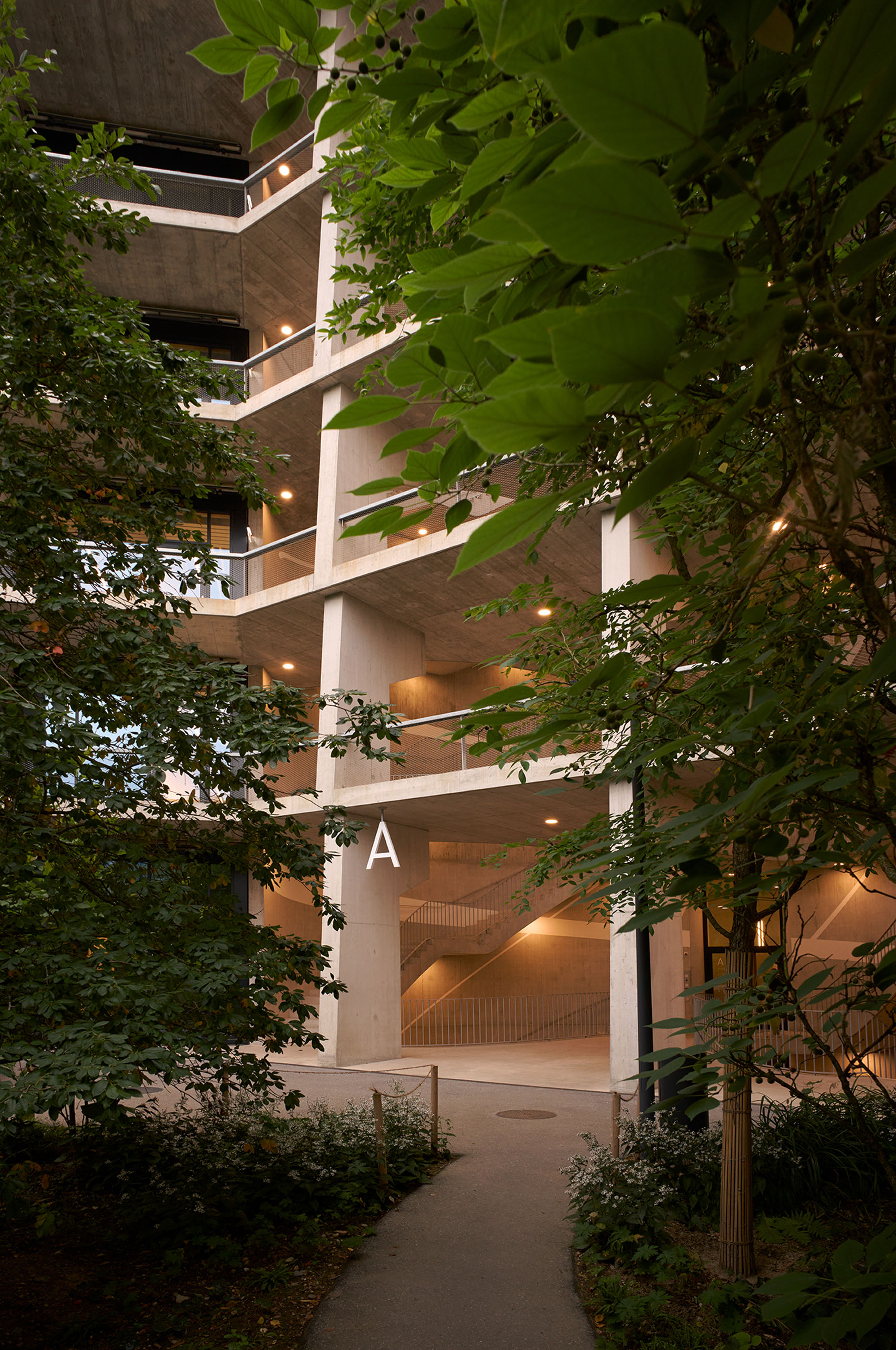
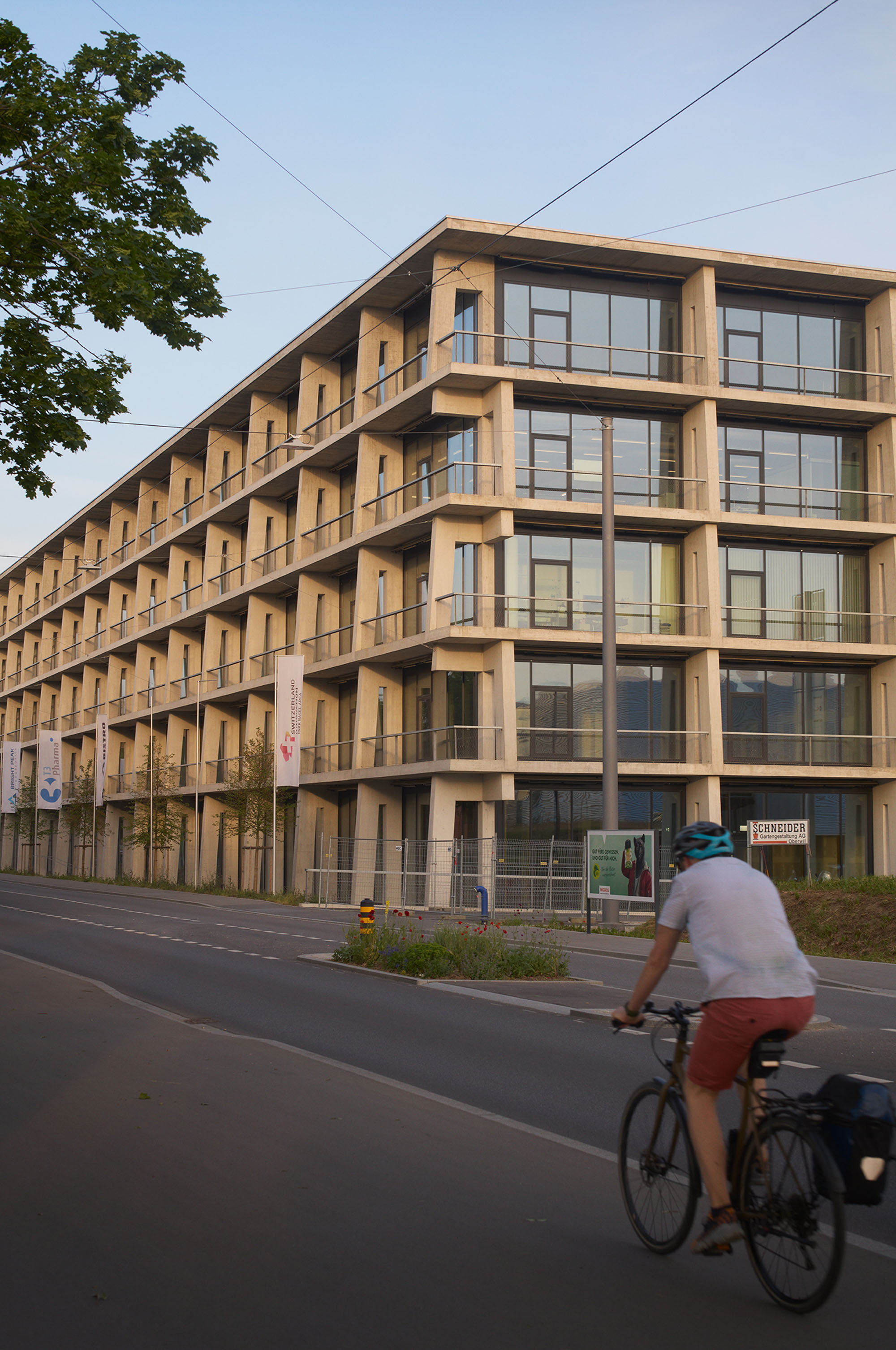
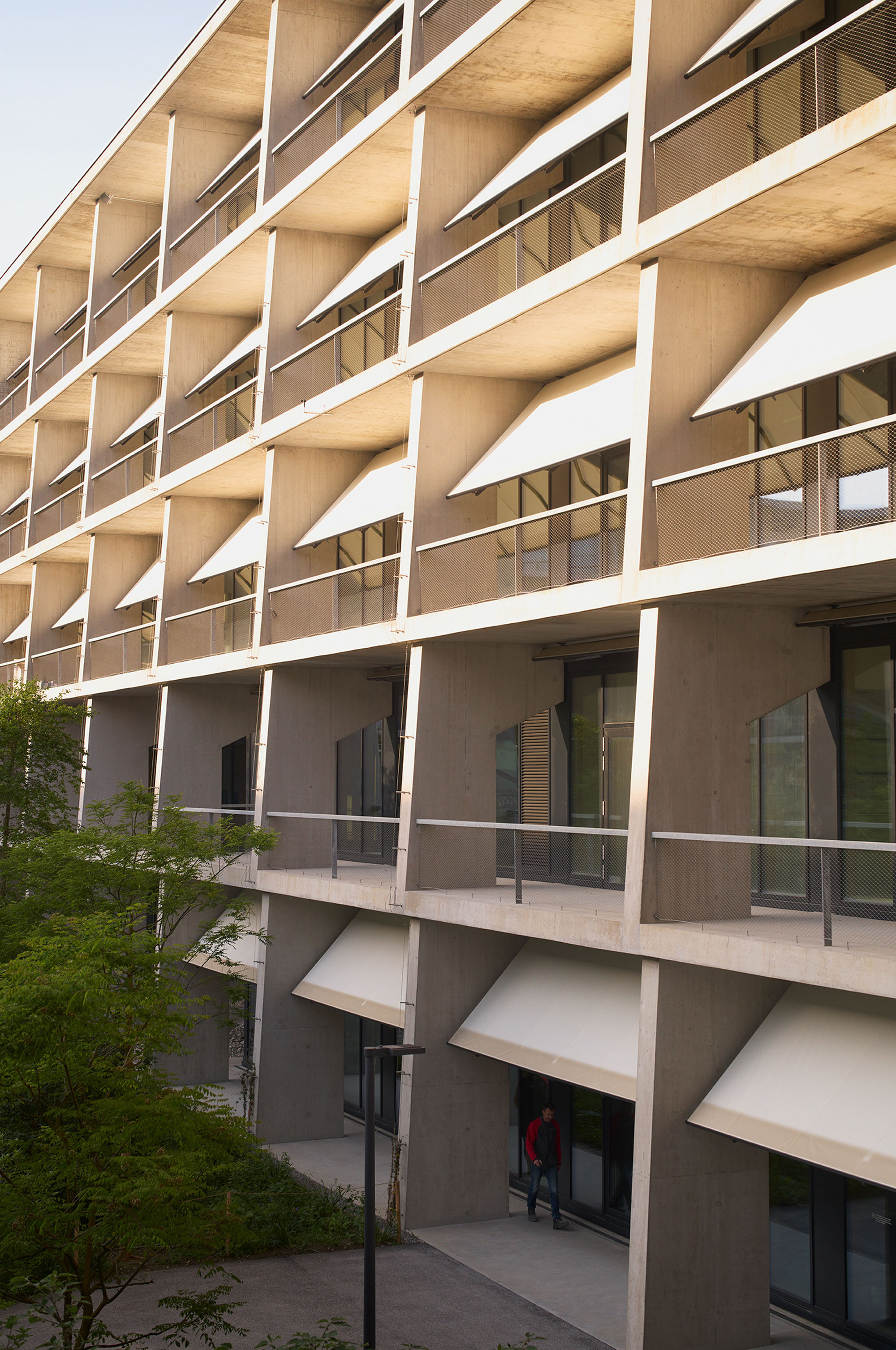
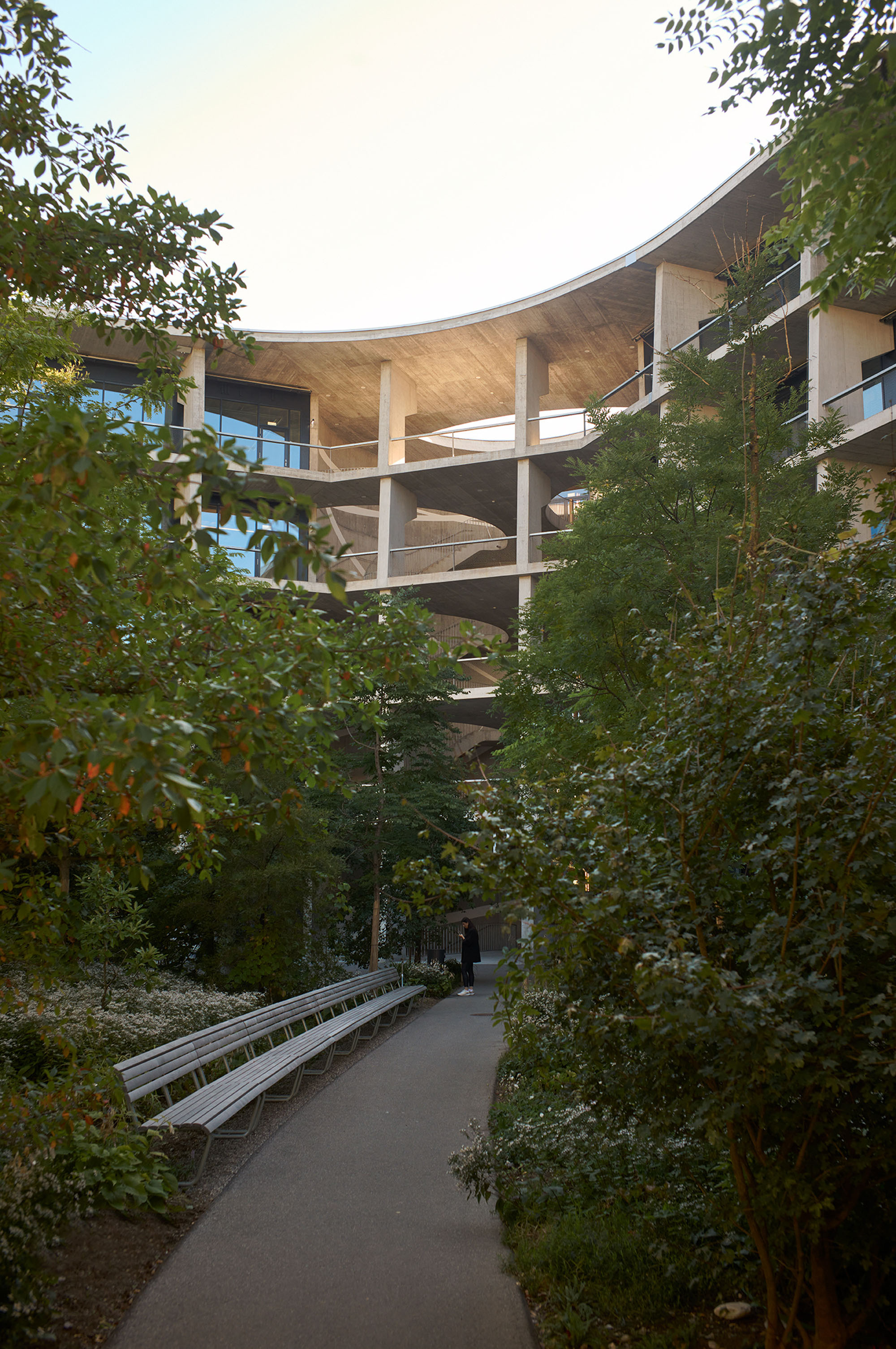
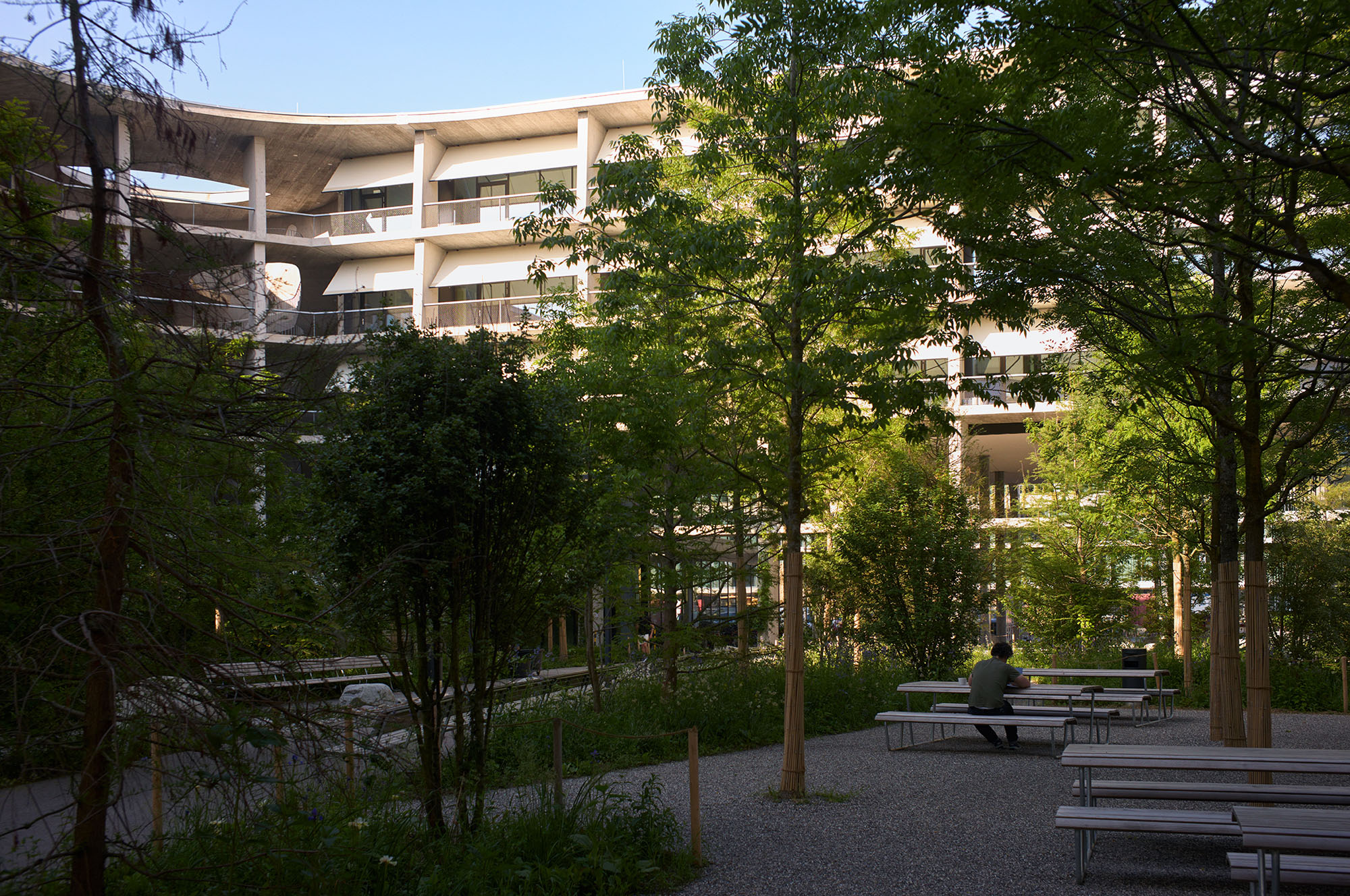
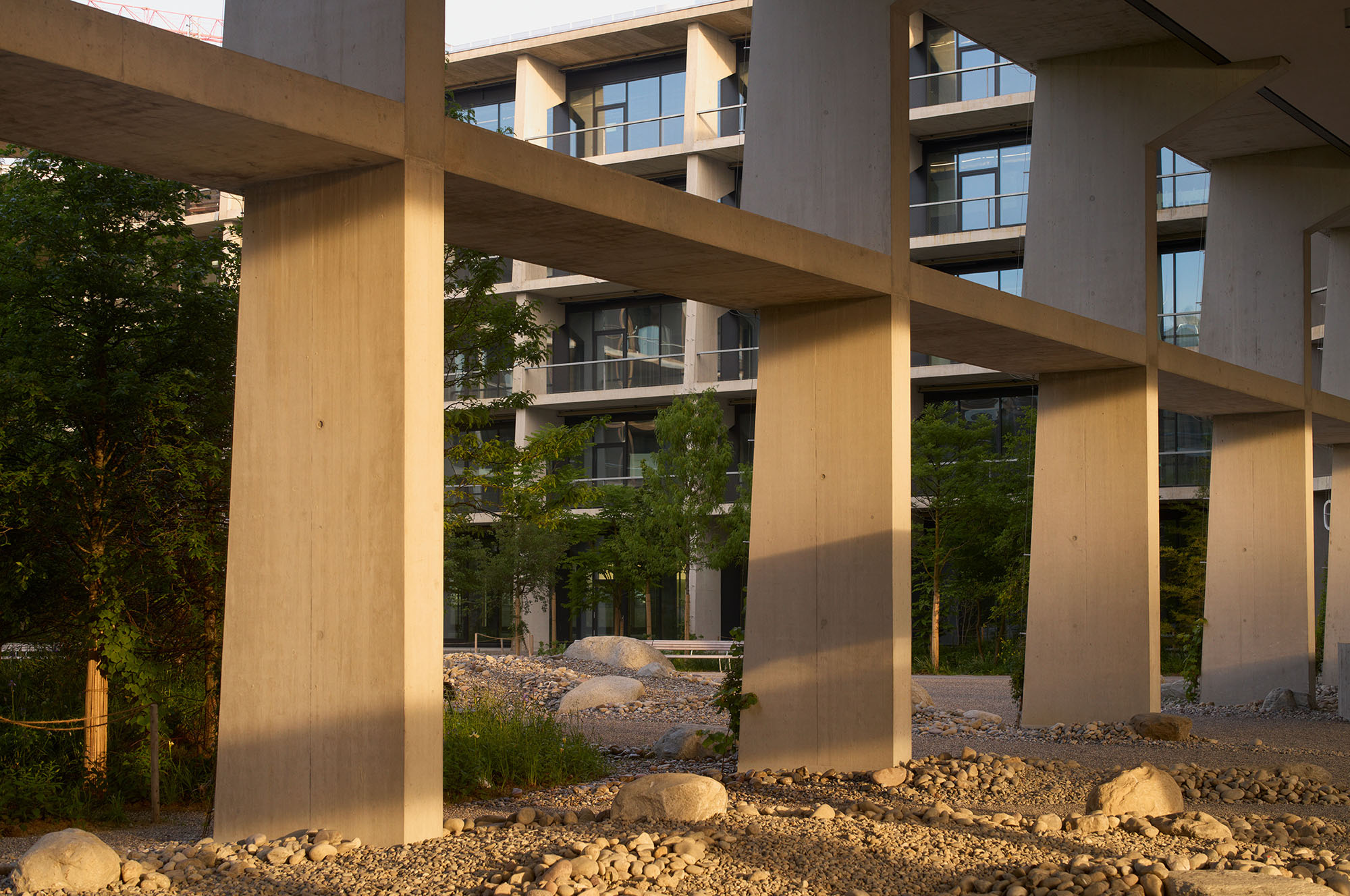

Based on the concept of a ‘courtyard house’, the SIP Main Campus offers approx. 50,000 m² of usable floor area for 2500-3000 employees and thus is the largest building on the site. The landscaped courtyard is accessible through a pair of two-storey passages that cut through the block at street level. It is one of a sequence of green spaces running from west to east through the entire BaseLink site, contributing to a good microclimate and allowing connections from one property to the next. The shaded central recreation area – as large as a football field – is designed with a combination of trees and deep-bed planting, leaving the visual axis at eye level free for easy orientation; climbing plants extend the landscape vertically to the pillars of the building itself. The groundscape consists of largely unsealed gravel surfaces and seepage pits in reference to the original riverbed landscape of the area. From the inner courtyard, the building is accessed via four generously designed spiral staircases in the corners, allowing for up to eight different main users per floor
The facade is defined by a deep, gridlike structure of insitu concrete, which absorbs vertical loads and serves as bracing for wind and potential earthquakes. These inner and outer rings of structure allow for a reduction of size and number of structural elements inside the building, which in turn offers the greatest possible typological and scale flexibility for users. The loggias of the inner façades allow for a variety of opportunities for exchange, lingering and encounter. They further provide protection from the sun, along with awnings, as well as access to the building and serve as fire escapes. At the same time, these outdoor spaces allow passive cooling through the shading of the facades, which is supplemented by energy-efficient heating and cooling ceiling panels as needed. The entire BaseLink site is served by geothermal energy.
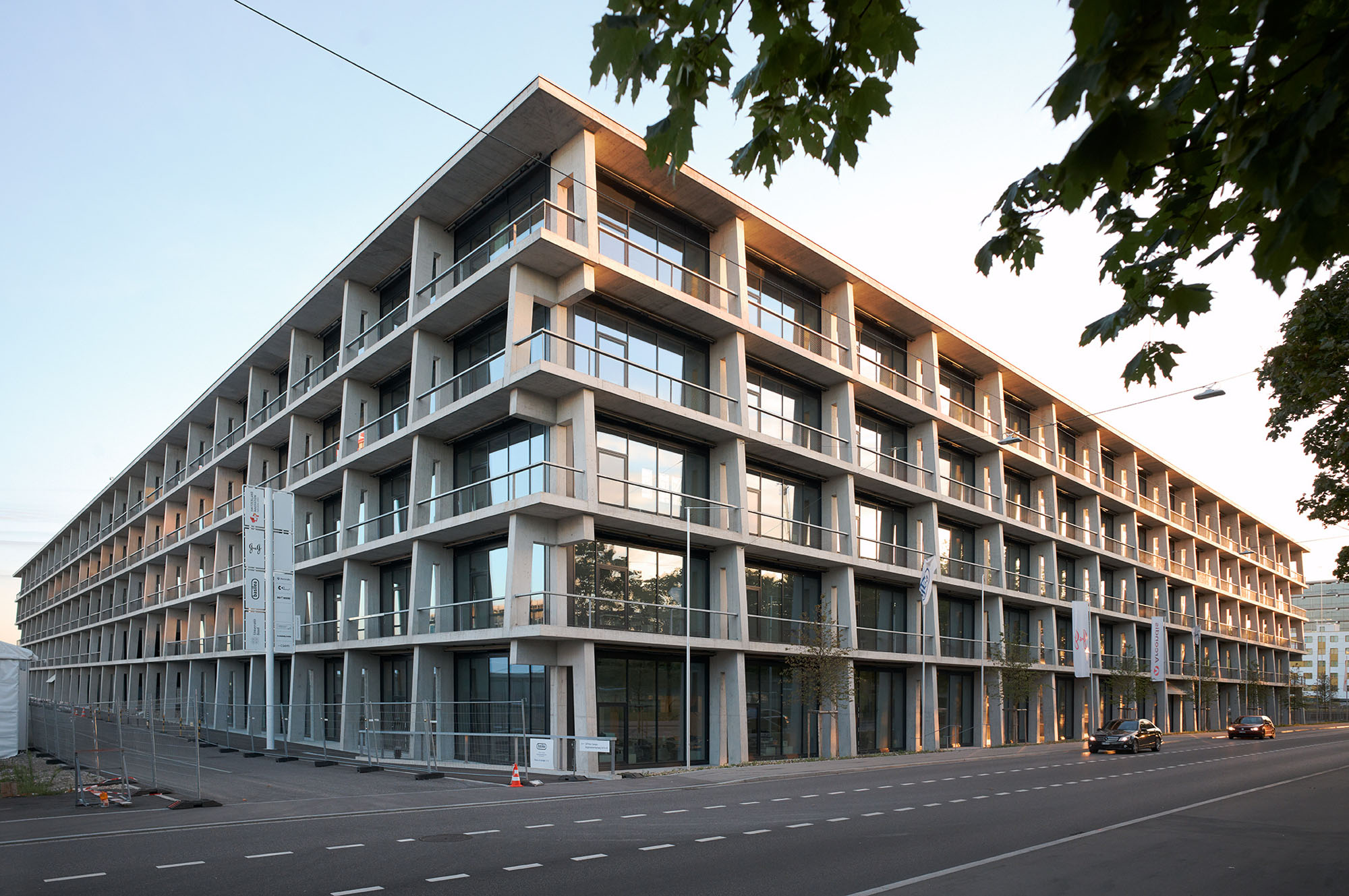
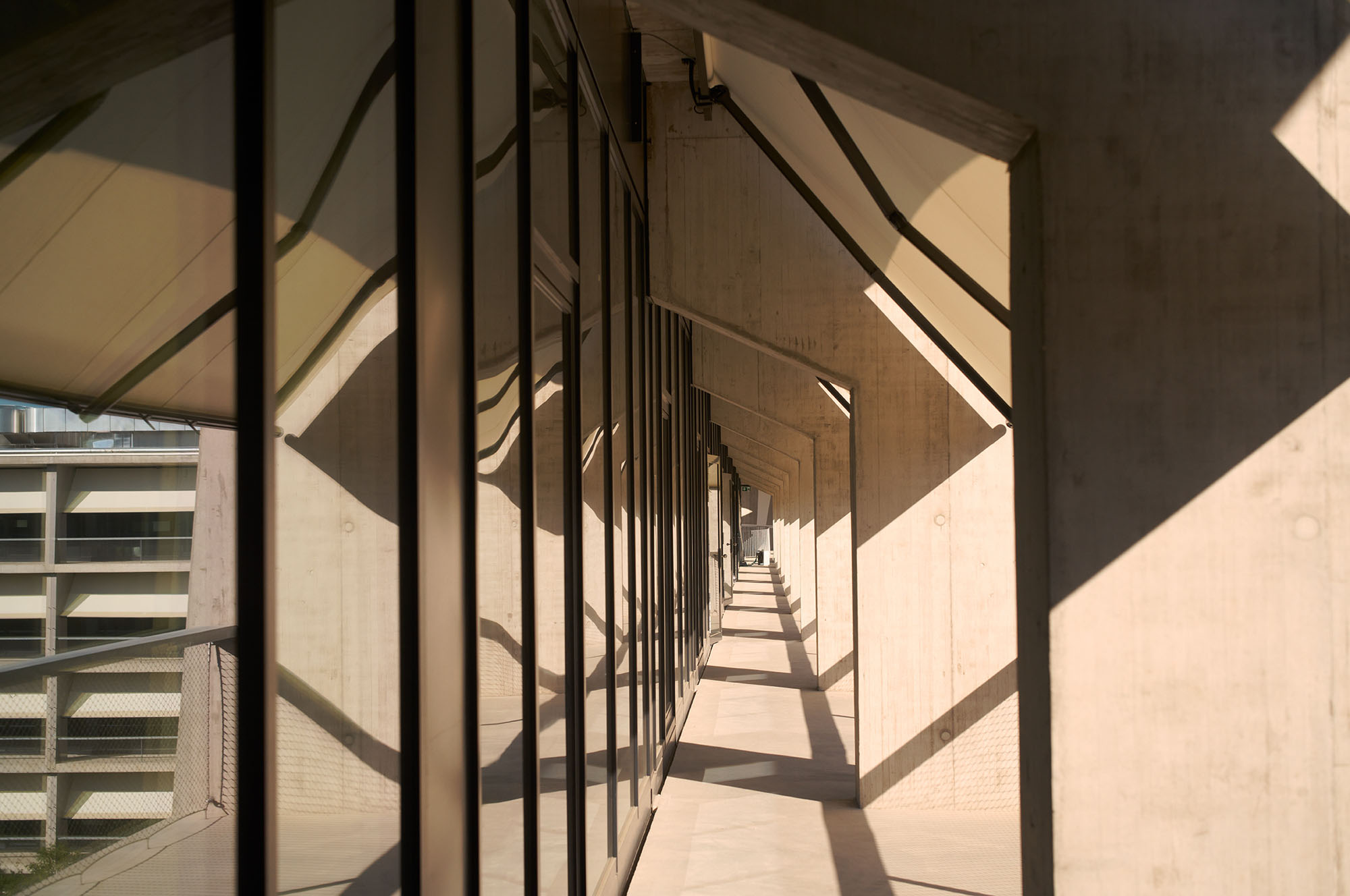
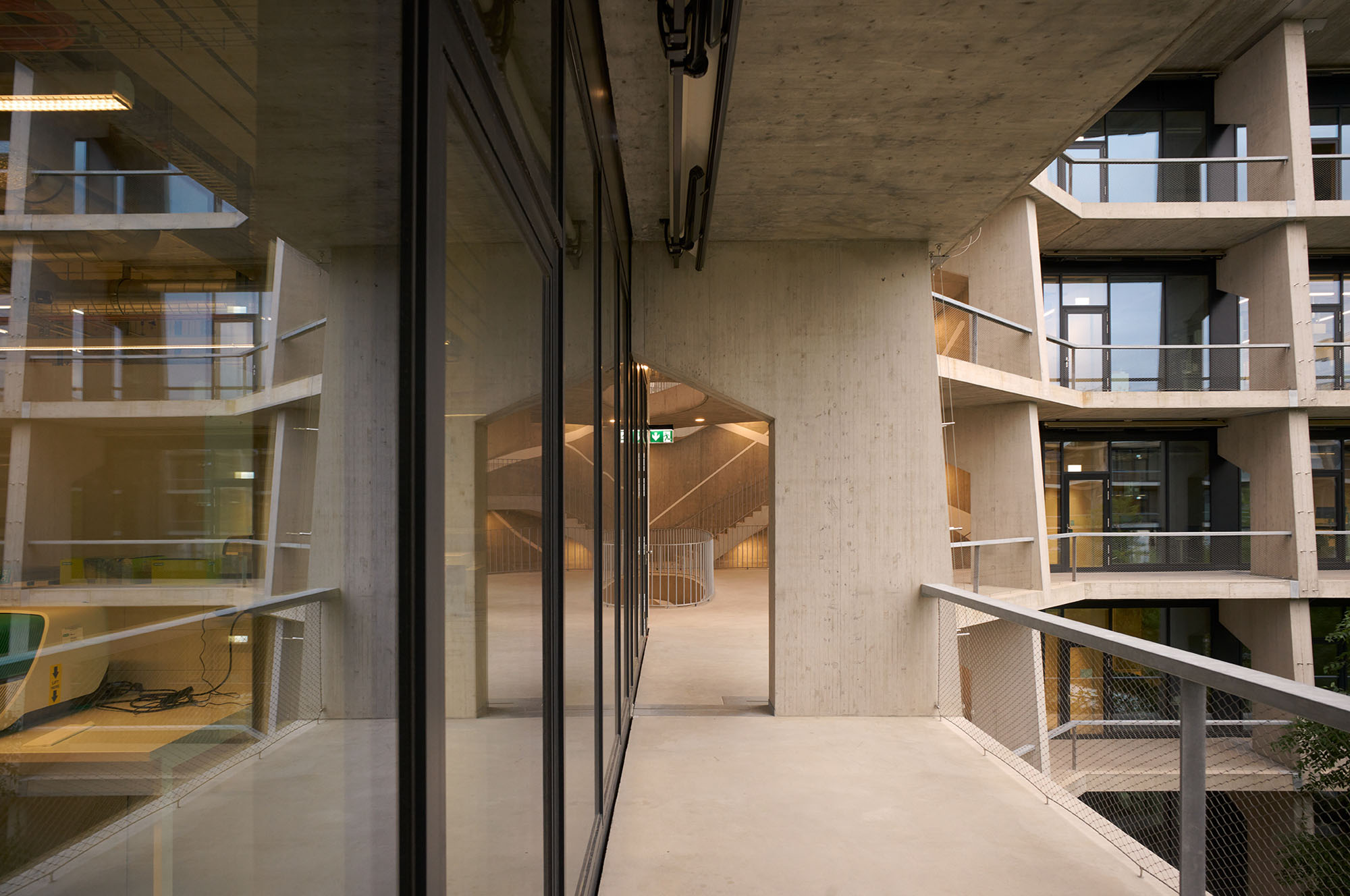
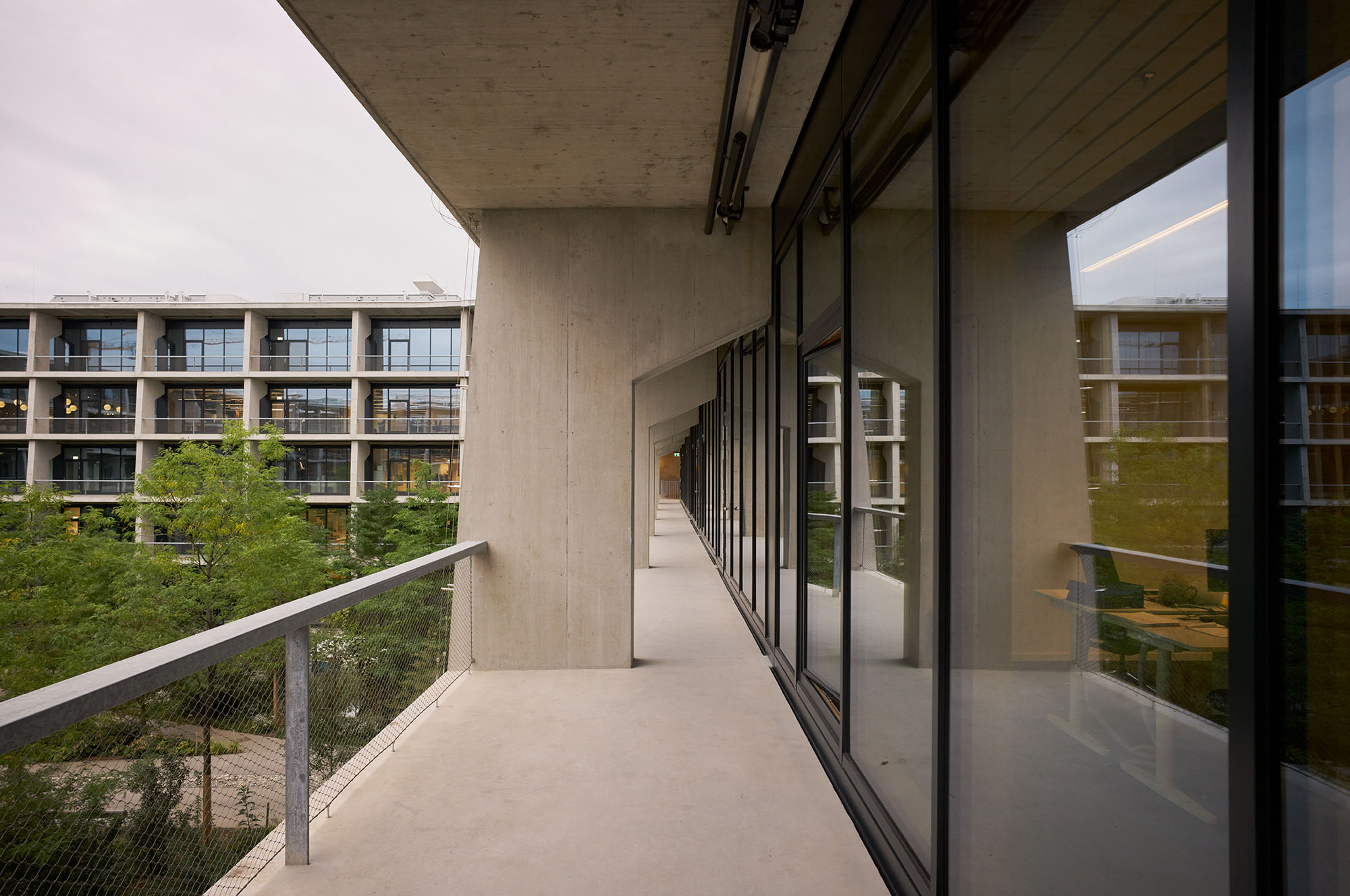
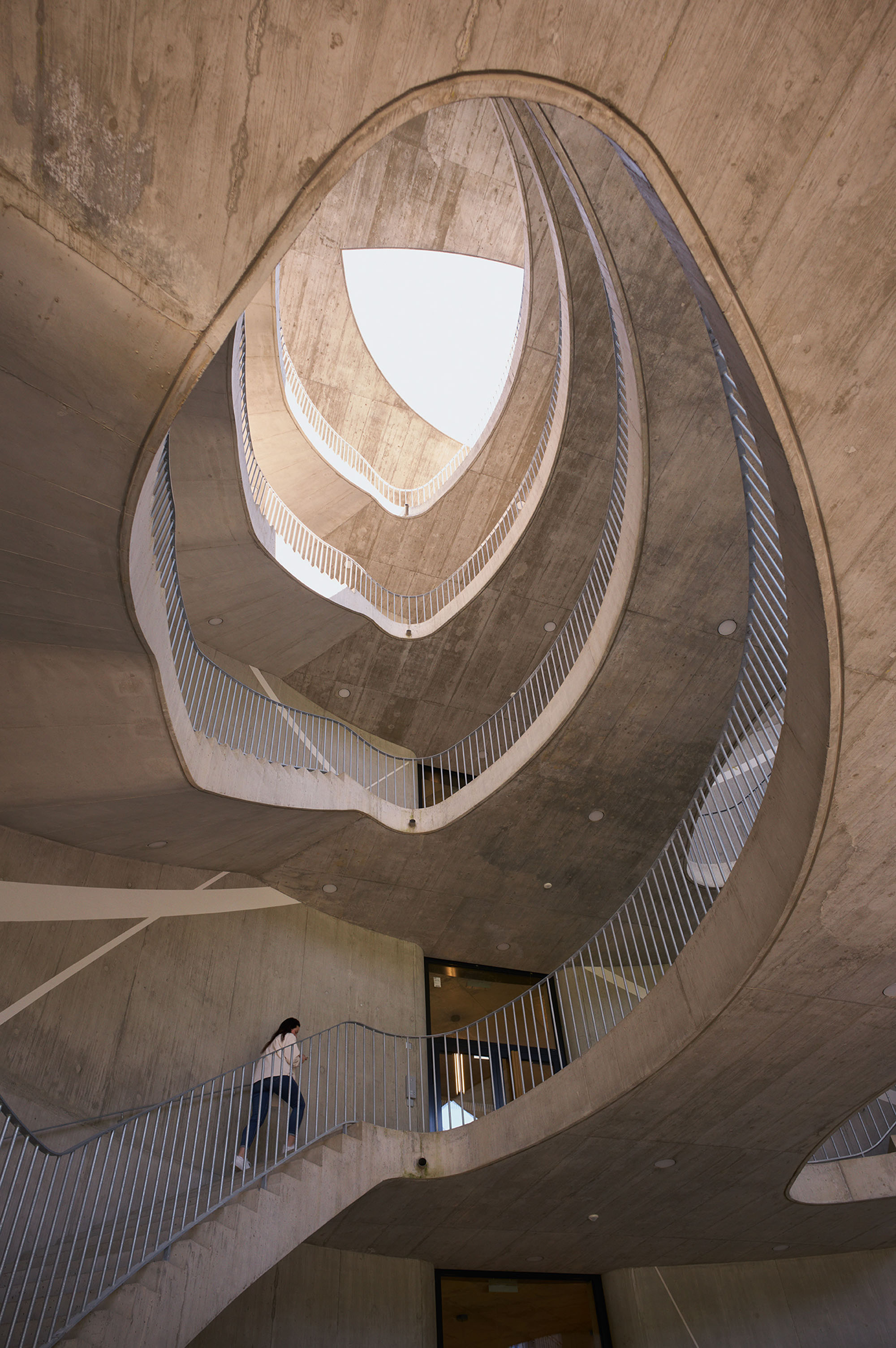
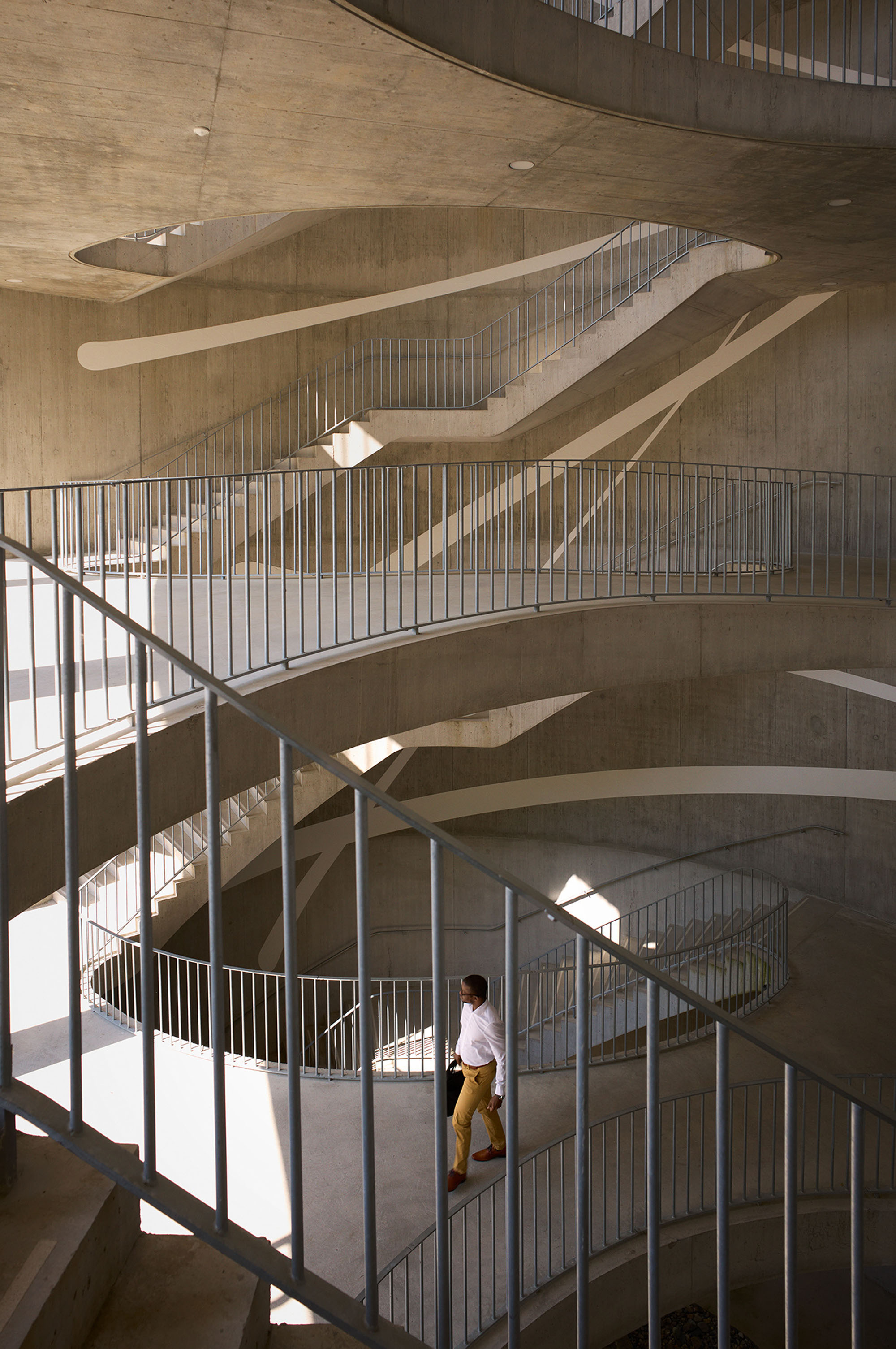
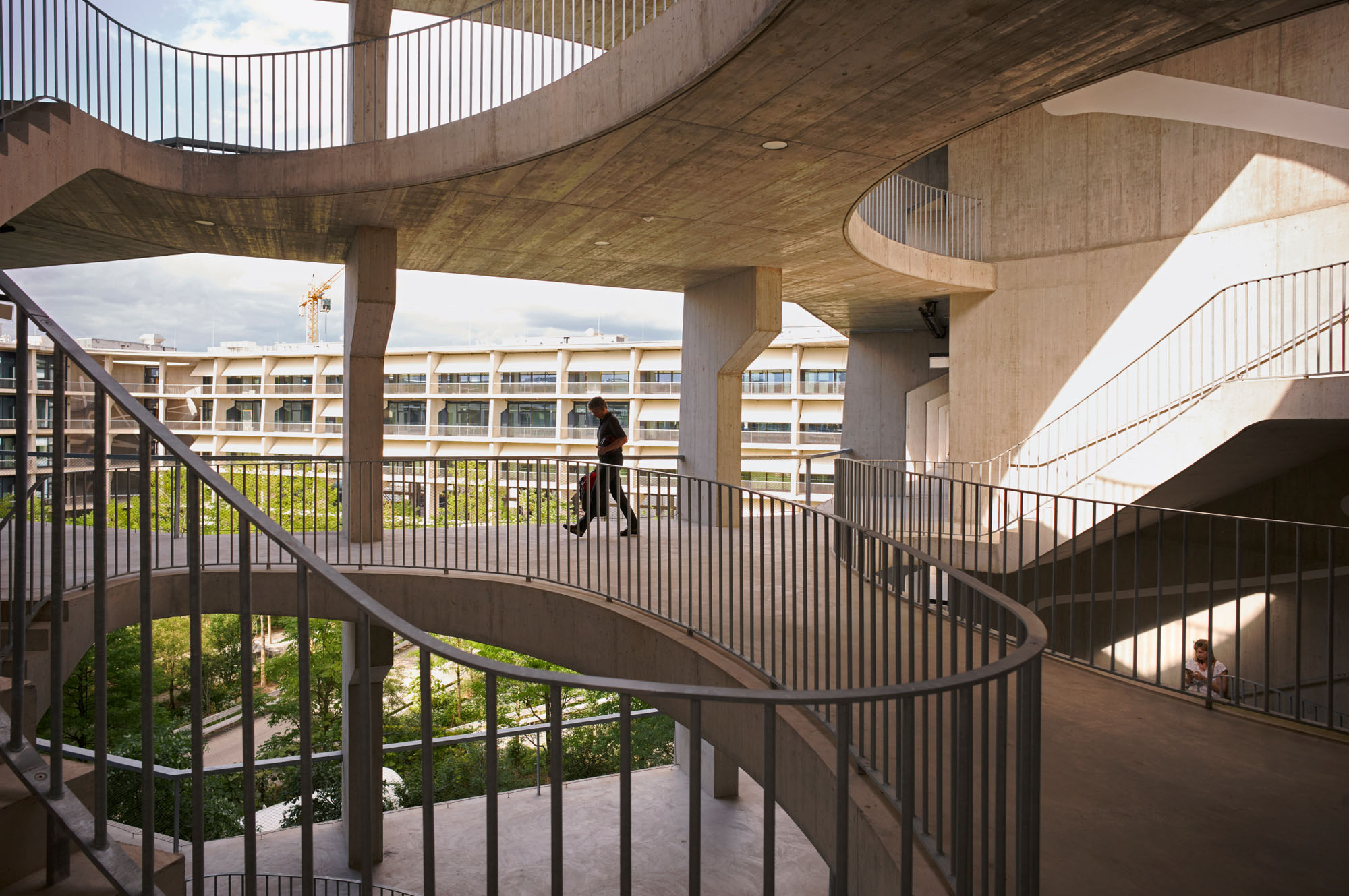
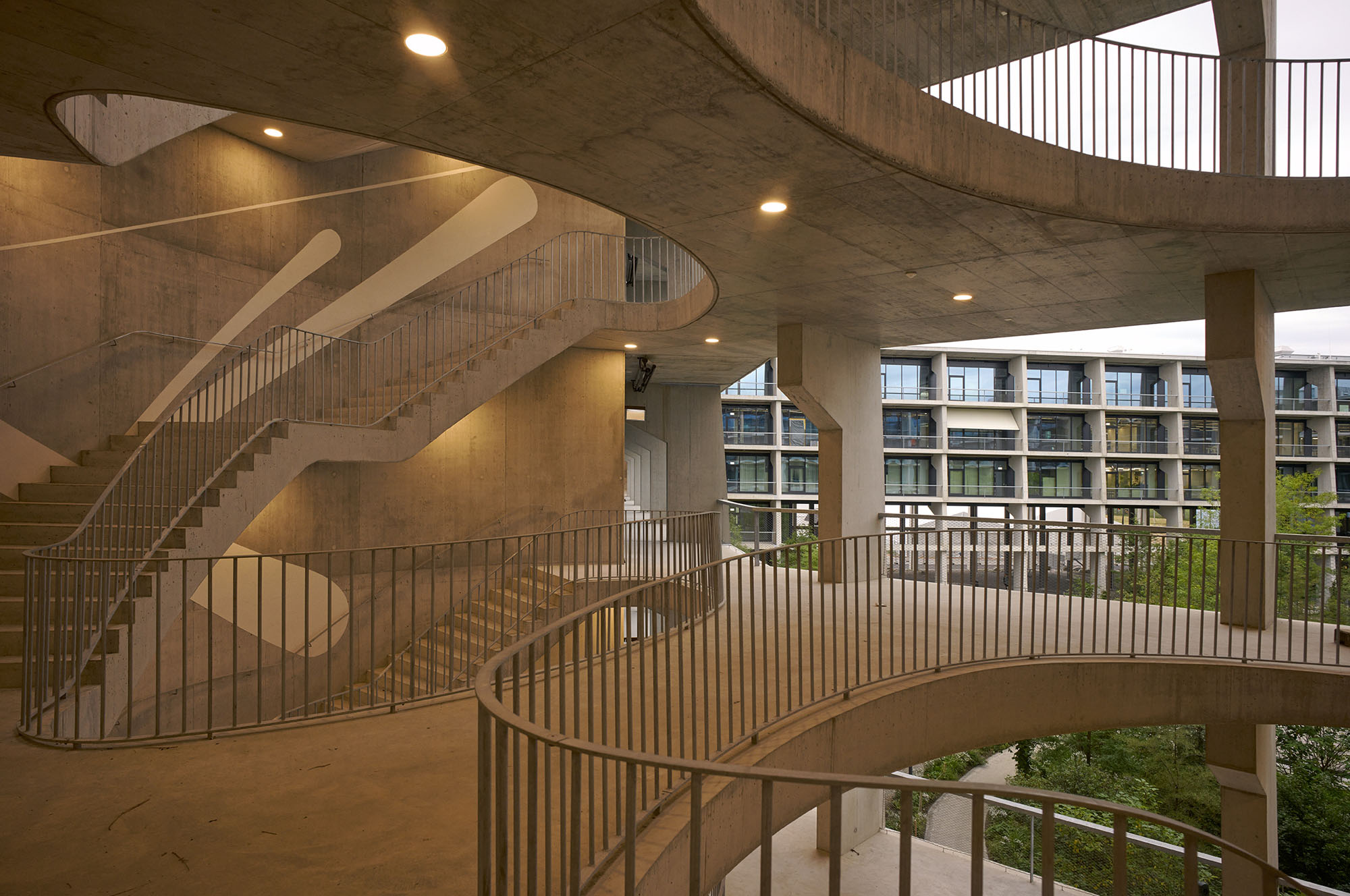
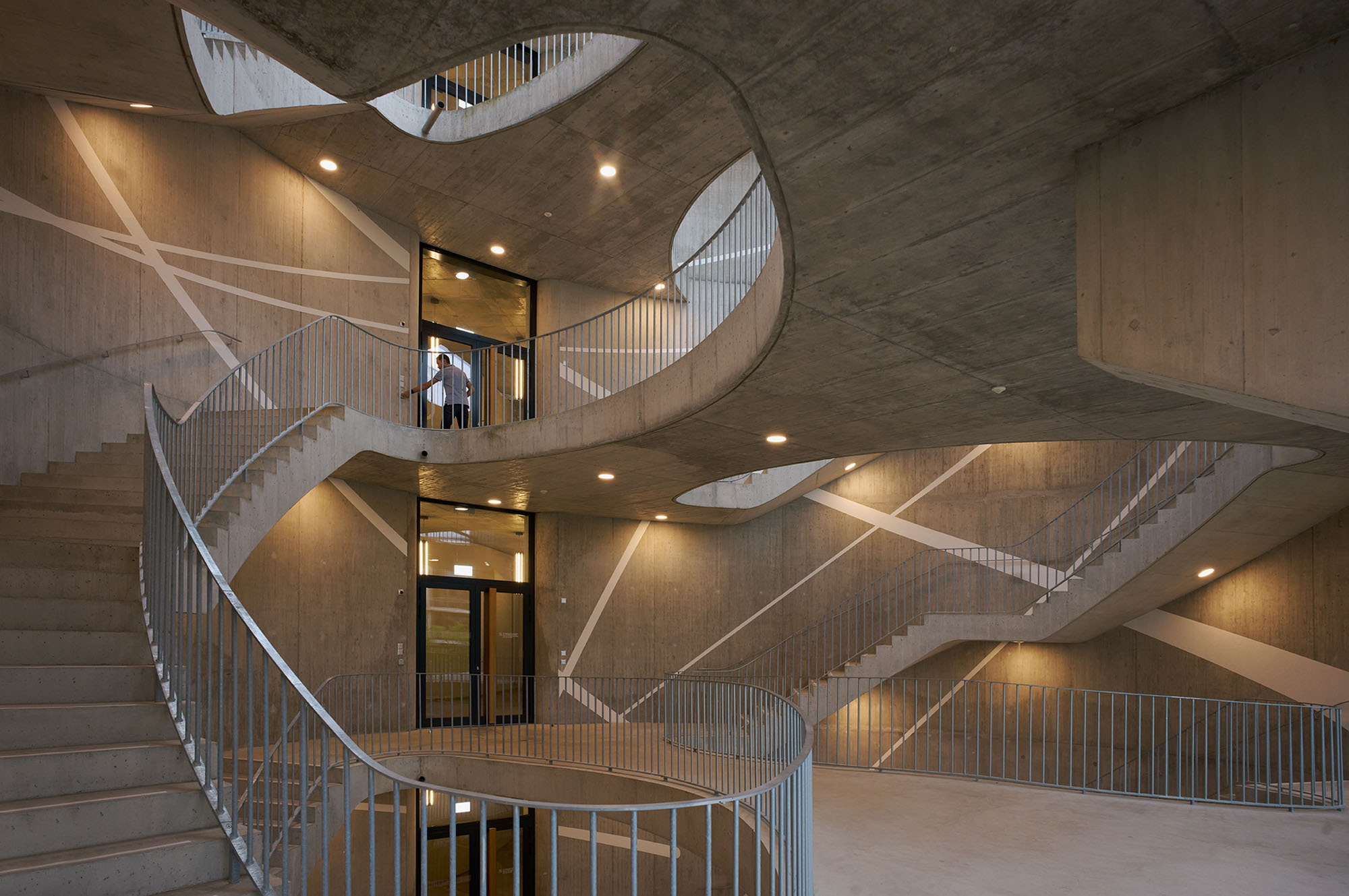
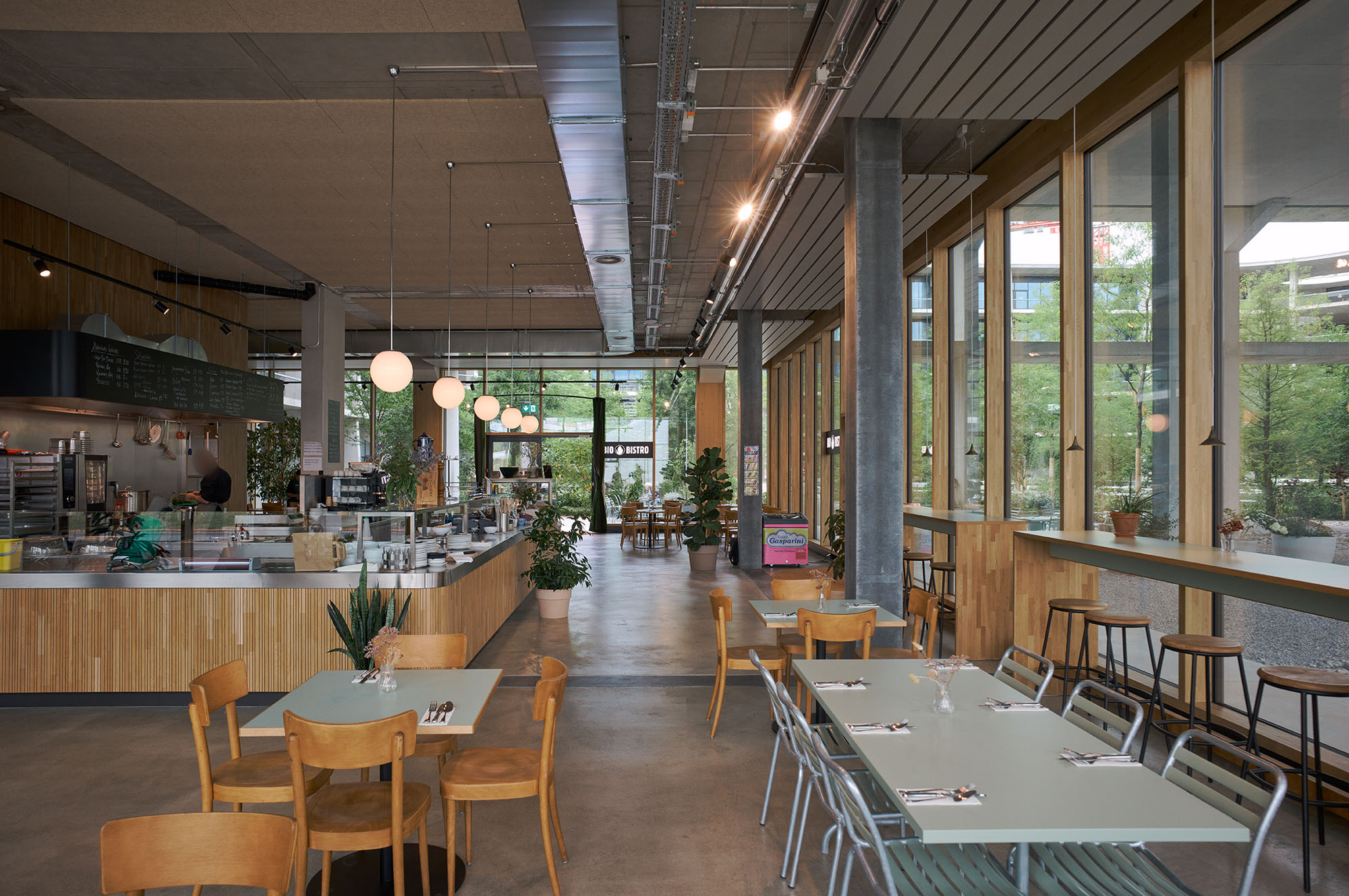
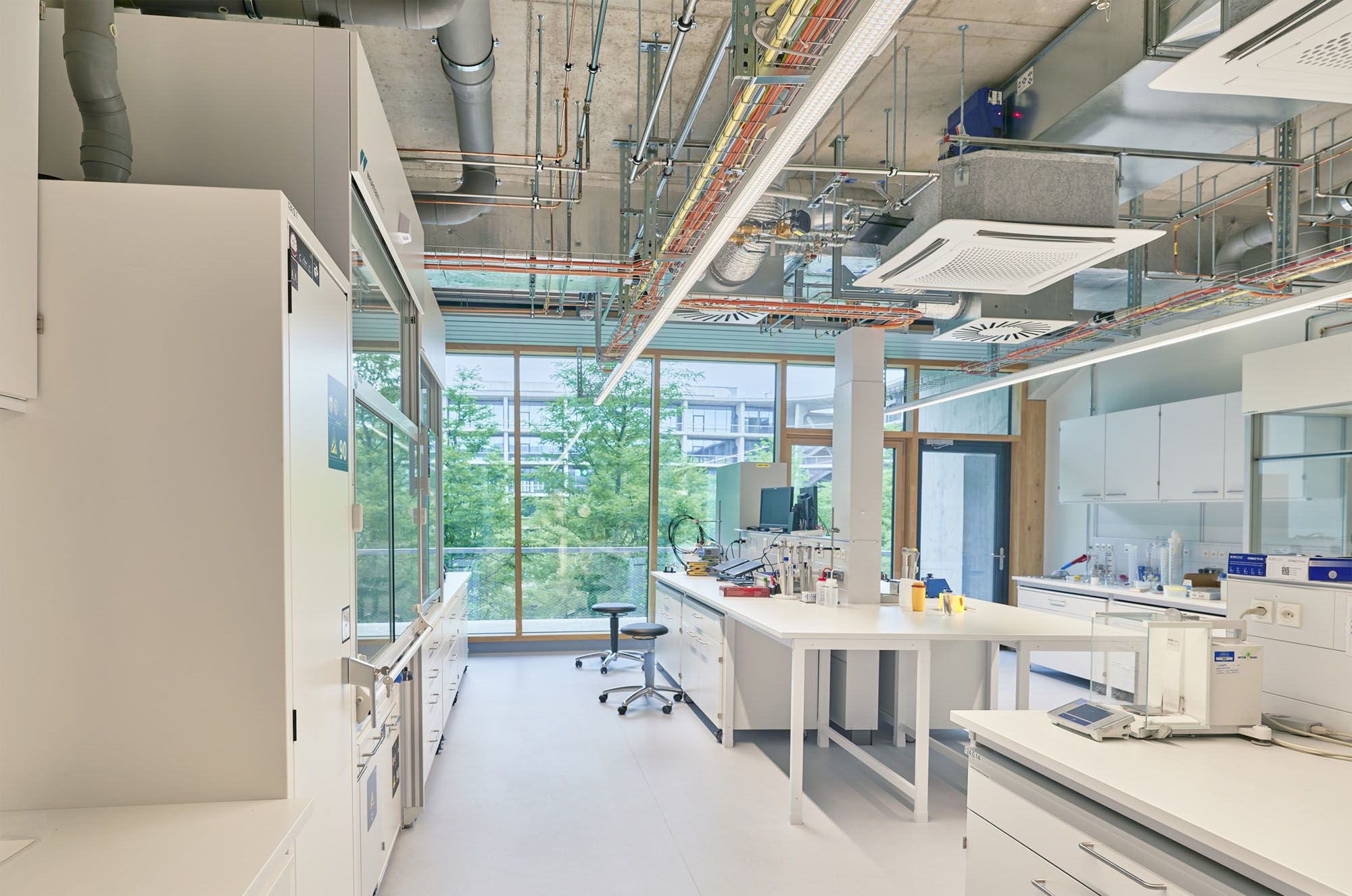
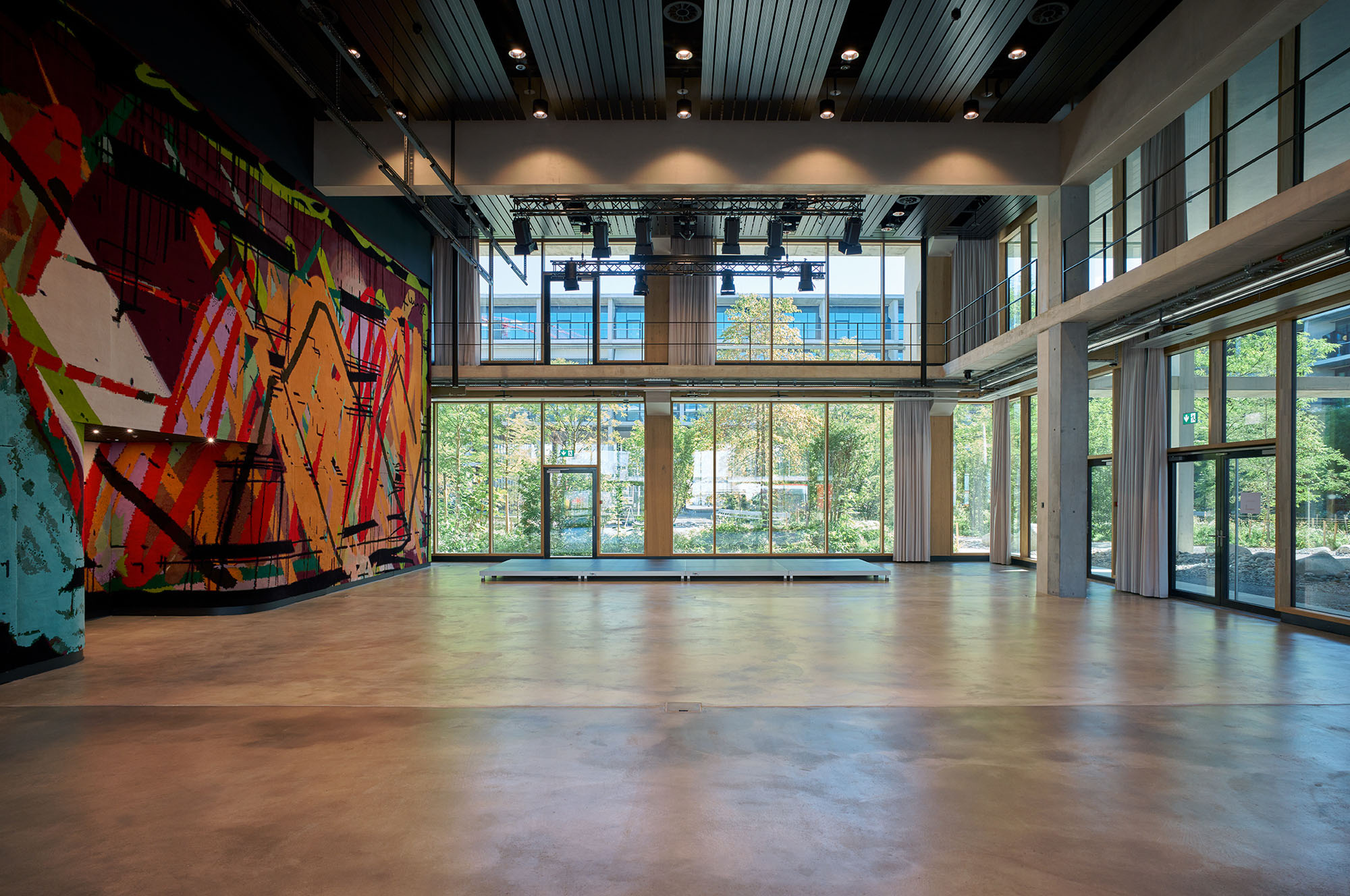
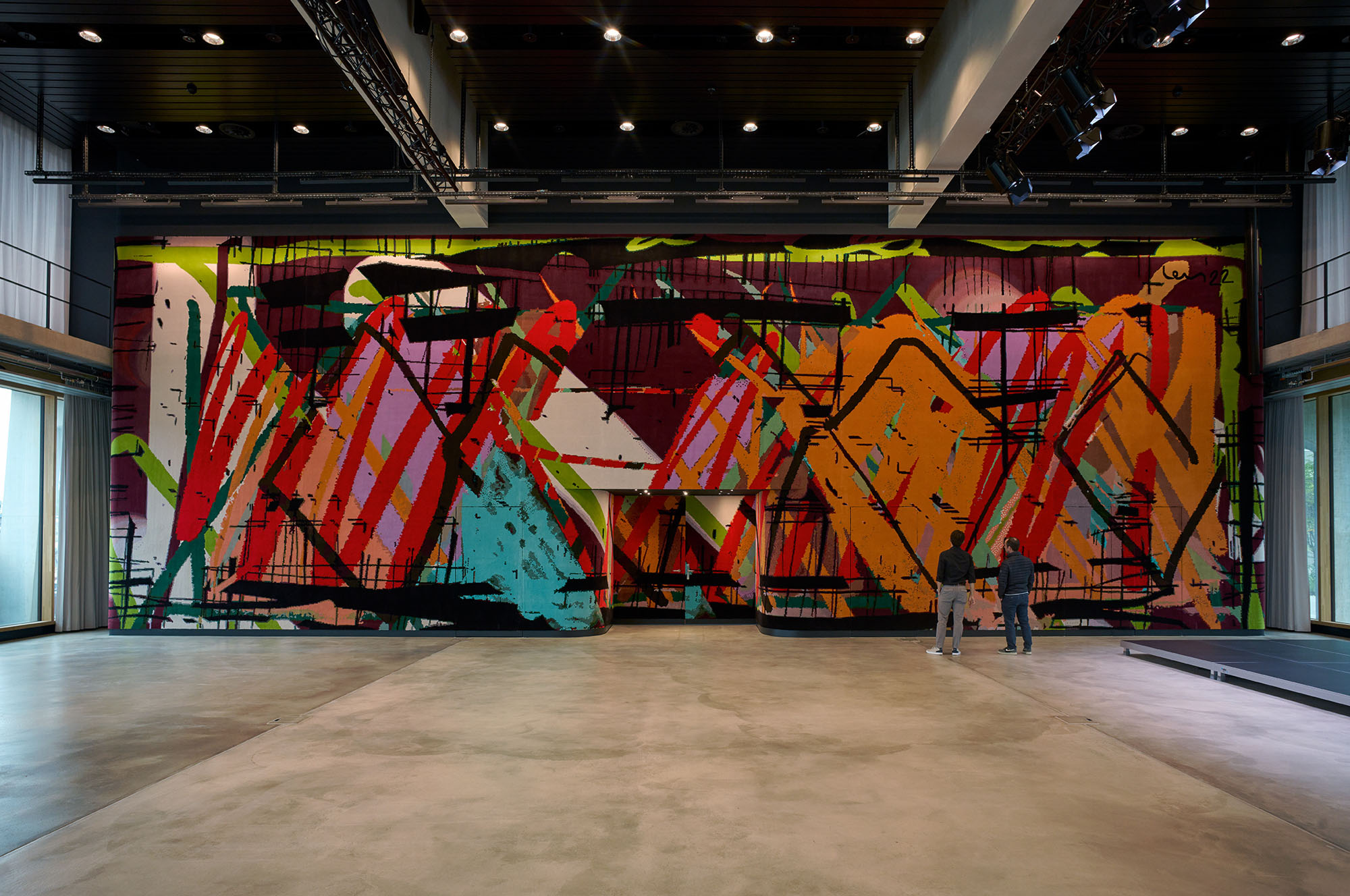
The vertical elements of this grid are at a slight incline. This slight deviation lends weight to the horizontals and integrates the dimensions of the building to a human scale. Businesses and restaurants occupy the ground floor, together with a large auditorium with seating space for up to 300 people. Also available for external events, the auditorium is another program element that connects the building to the community. The floor plan, loadbearing grid, and room height of all five floors can accommodate laboratories or office spaces.
The four open staircases connecting the surrounding balconies of the inner courtyard are focal points throughout the building and aid in orientation; together with the auditorium, they form areas of exchange and communication. Basel-based artist Renée Levi has developed an artistic concept for these spaces. An interlaced grid of fluid lines of white plaster gives a specific character to each of the four corner stairs; the large gestures of the lines both accompany and anticipate the movement of collaborators between the floors. A custom-made wool tapestry, Nina, 19 x 7.5 meters, is installed on the wall of the auditorium; complementing the monochrome simplicity of the artworks in the stairs, it integrates their expressive lines with a vibrant, colorful pattern.


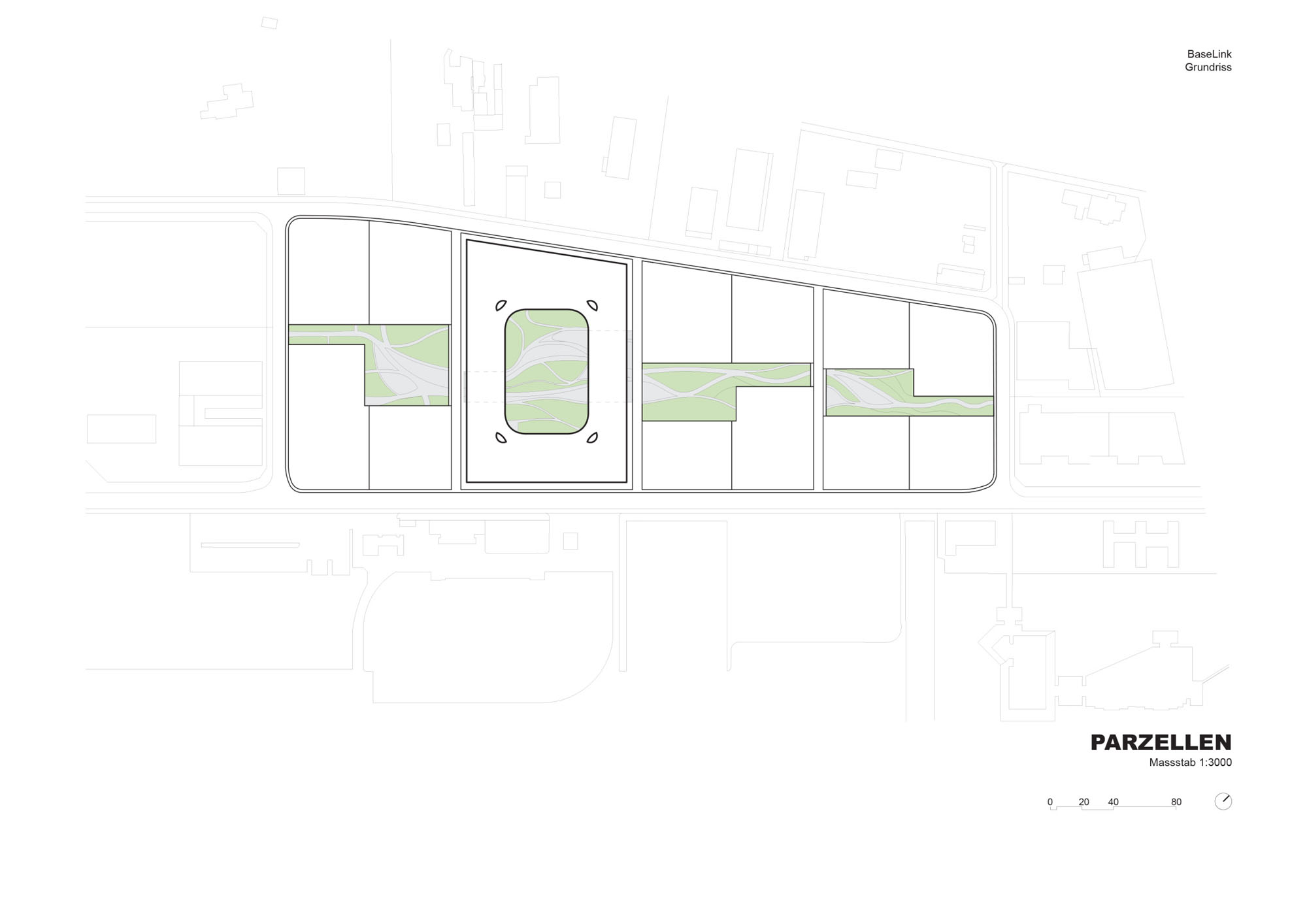
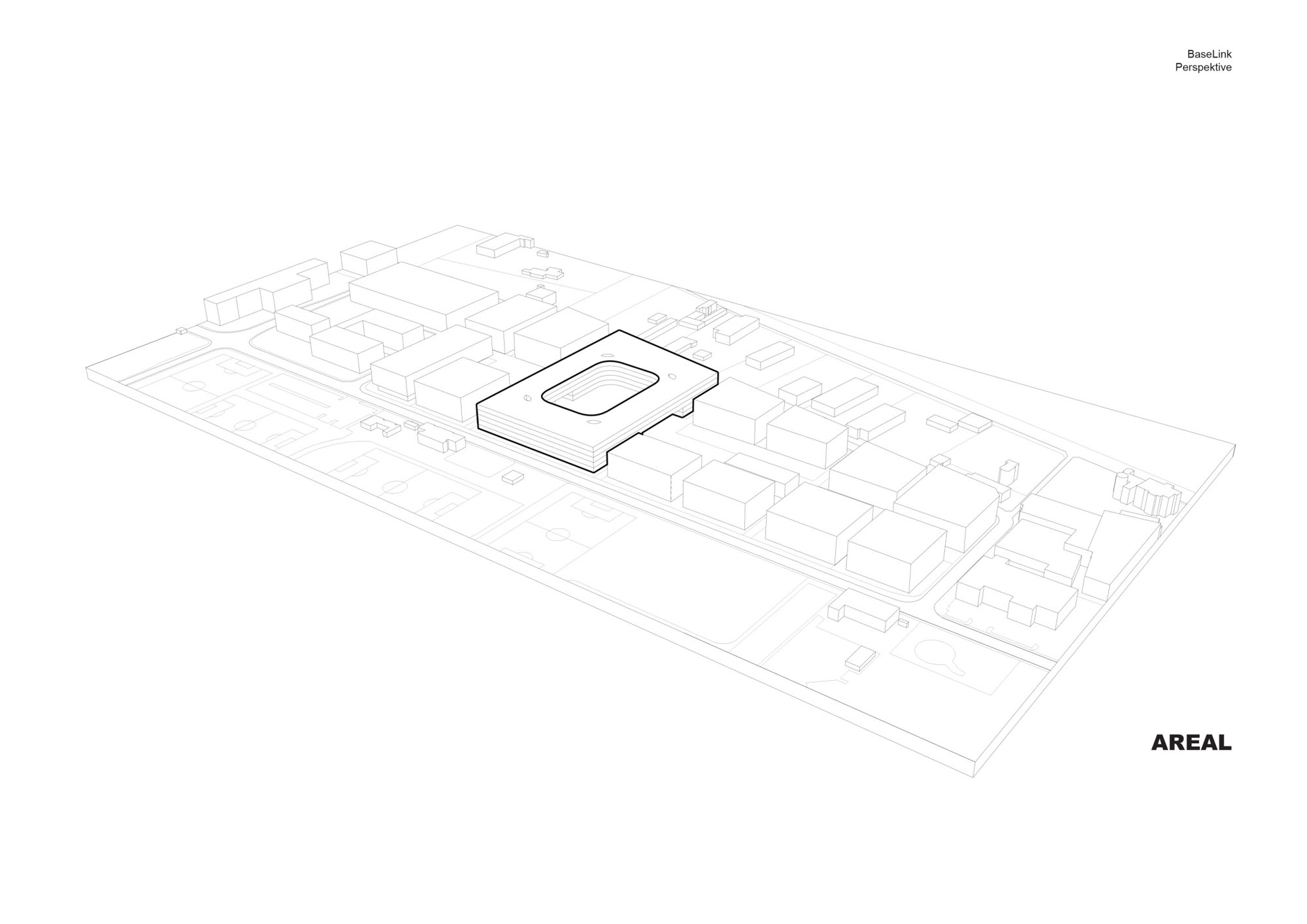
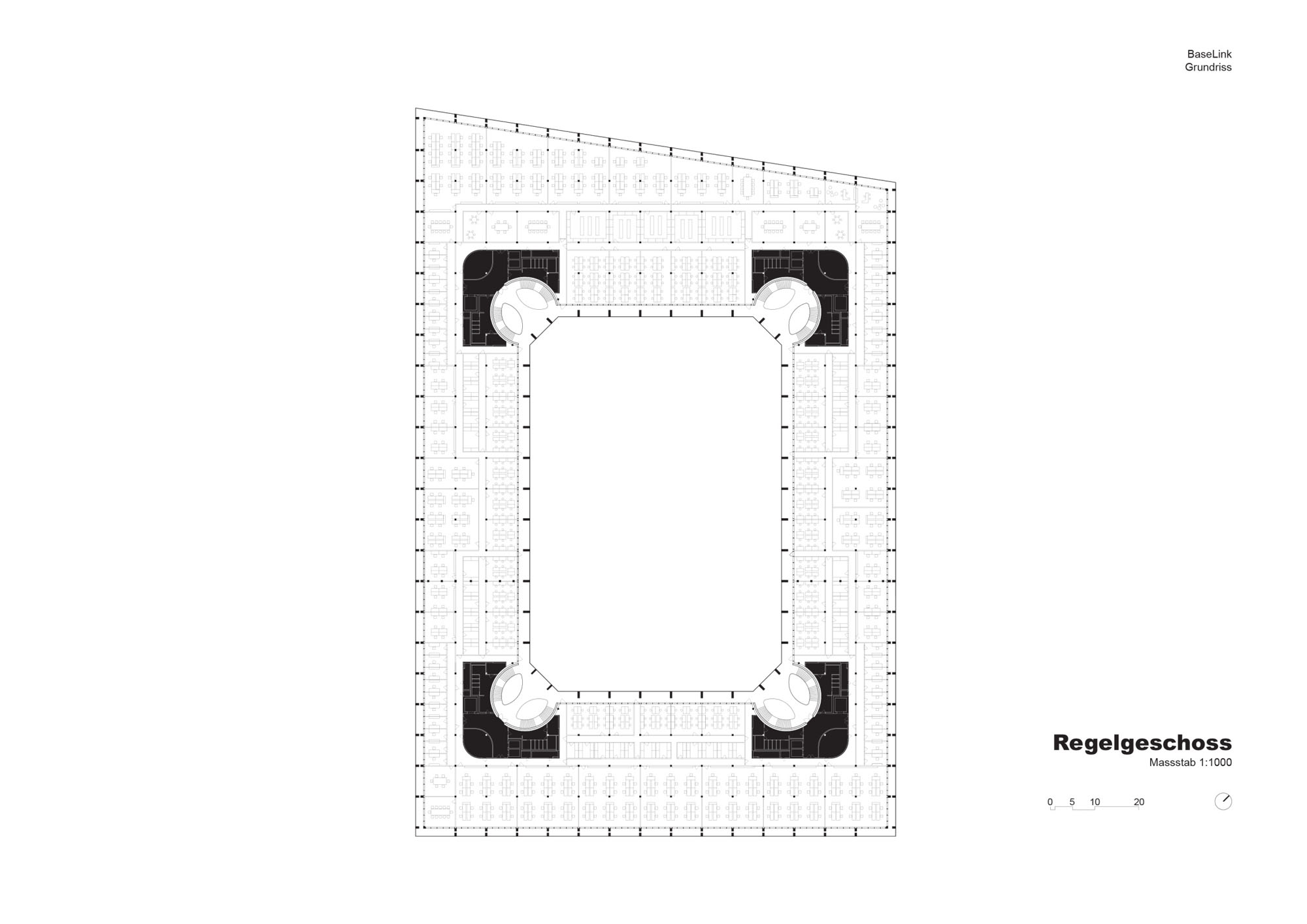
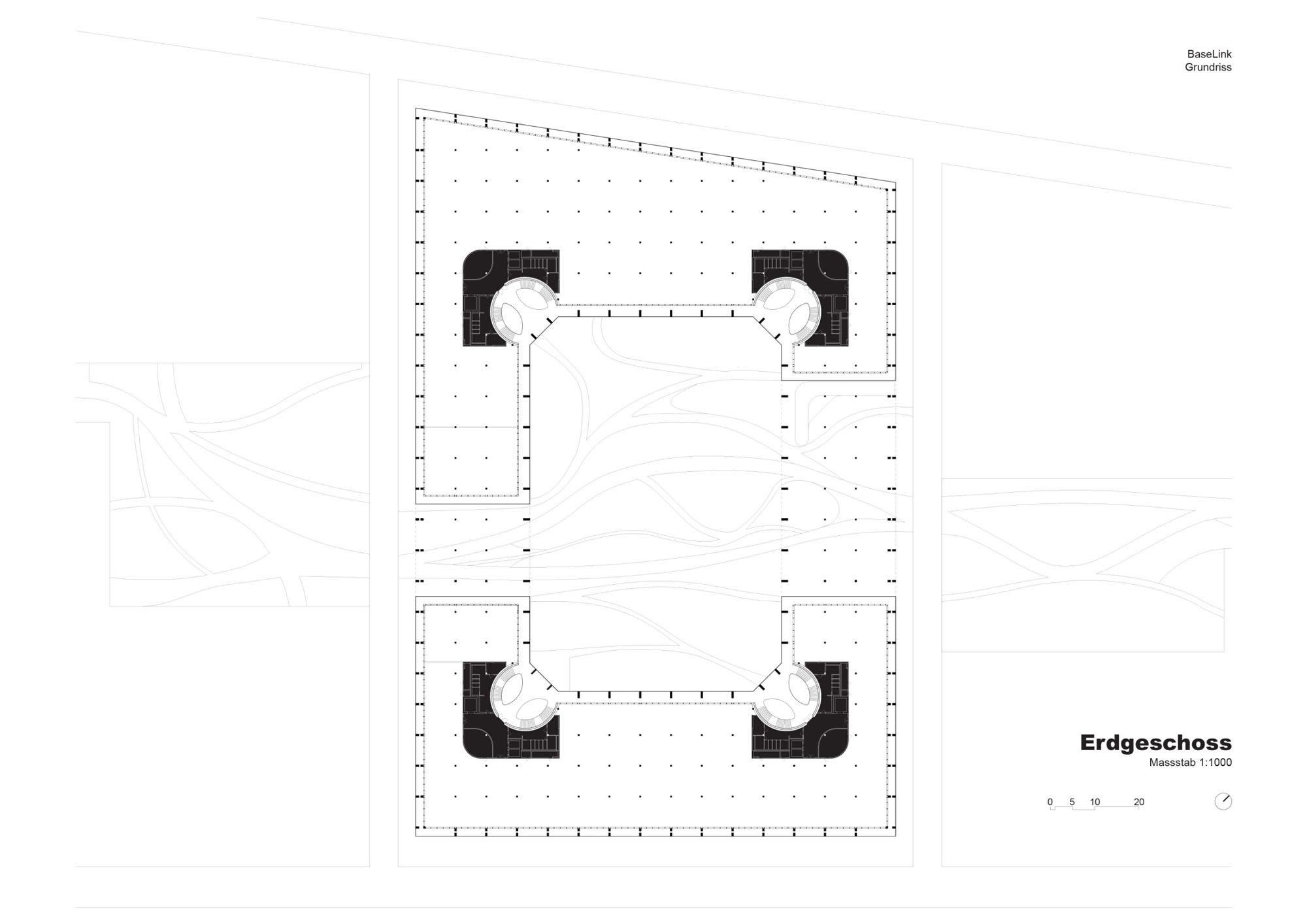
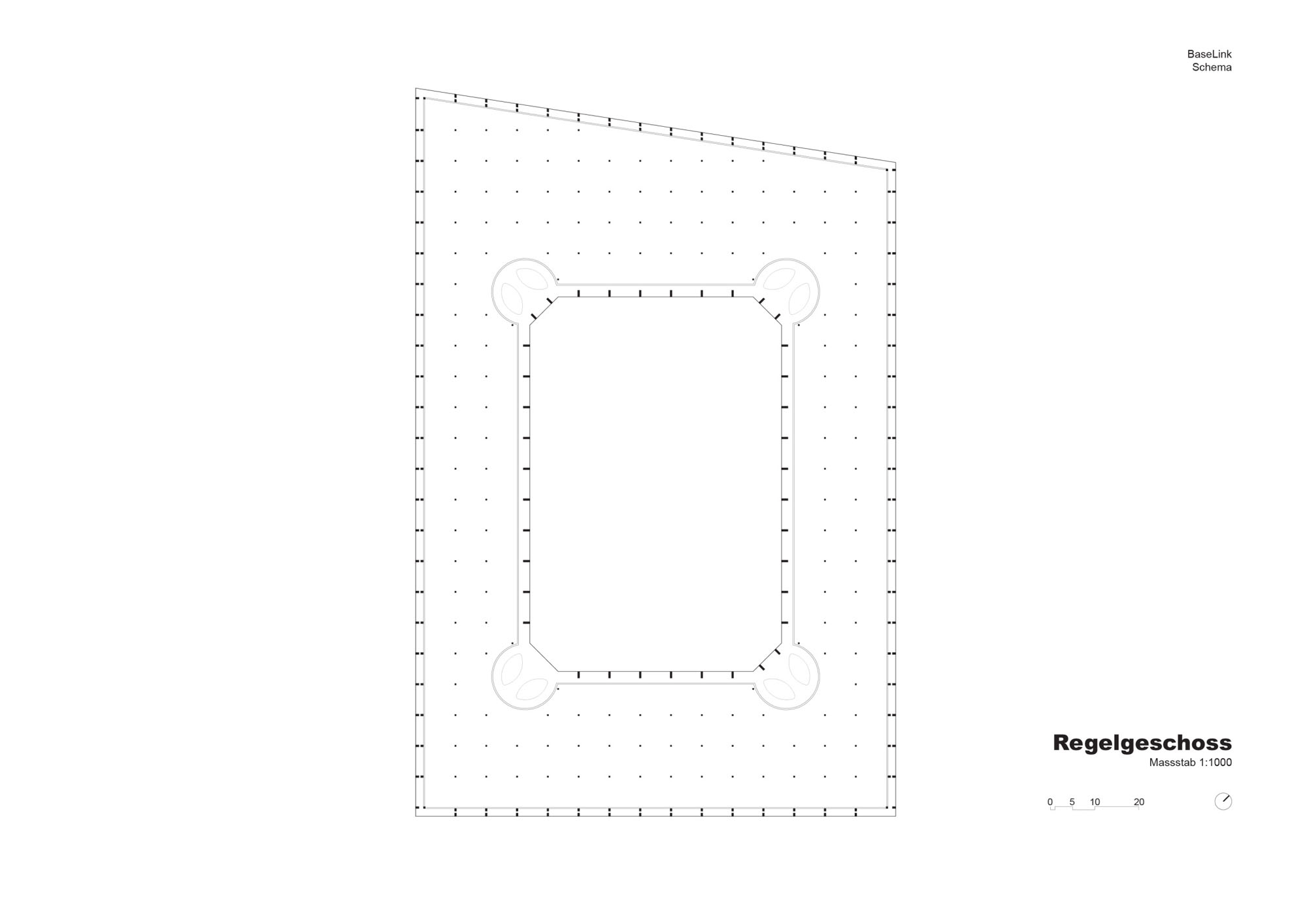
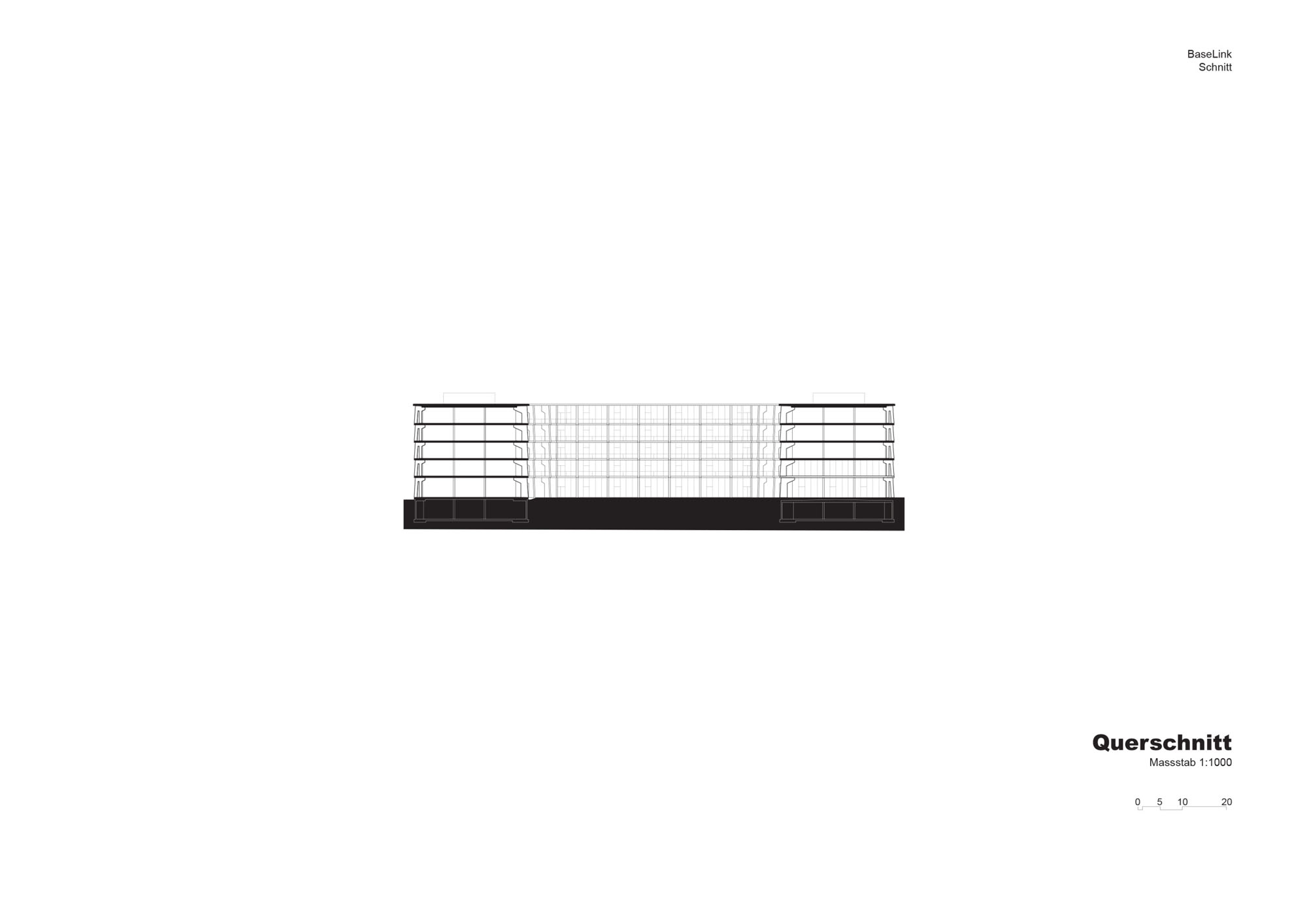
Other projects by Herzog and de Meuron




